
Everything in this slideshow
-
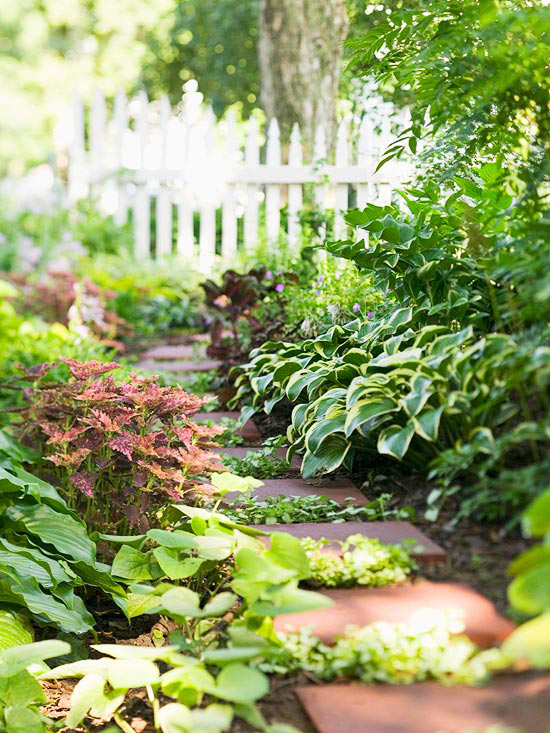
Put In a Path
Divide and conquer! That’s a surefire way to improve any shady backyard. Here, simple pavers create a sense of purpose and destination among a mass of hostas and other foliage plants.
Test Garden Tip: Repeating the terra-cotta color of the pavers with coleus helps integrate the path into the landscape — and provides a secondary splash of color.
- See other great garden path ideas.
-
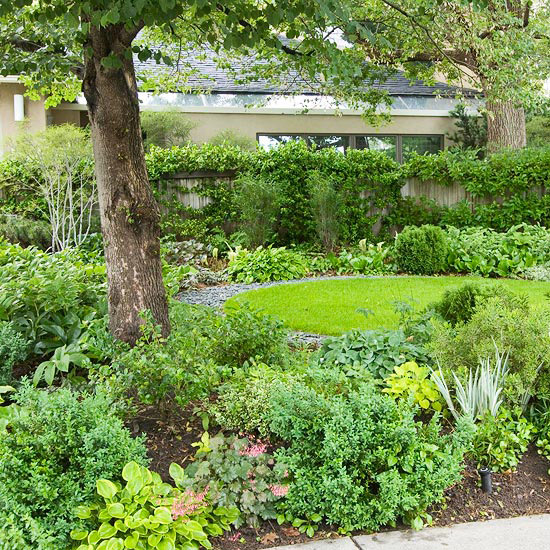
Reduce Grass
Every lawn grass — even those labeled as shade-tolerant — struggles if it doesn’t get enough light. So instead of fighting a big patch of fading grass, keep only a small section of turf and make it a landscape element by surrounding it with a wide swath of shade-loving plants. Or give up the grass and select shade-loving groundcovers.
- Discover some top groundcovers.
-
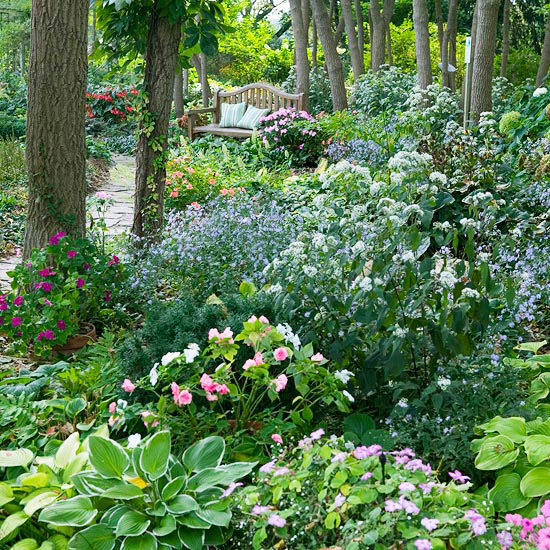
Create a Retreat
Transform an ugly, shady spot into a cool and stylish summer oasis by adding a bench and some flowers. That way you have the perfect place to enjoy a glass of lemonade on hot, sunny summer days.
- Discover other ideas for making a shaded retreat.
-
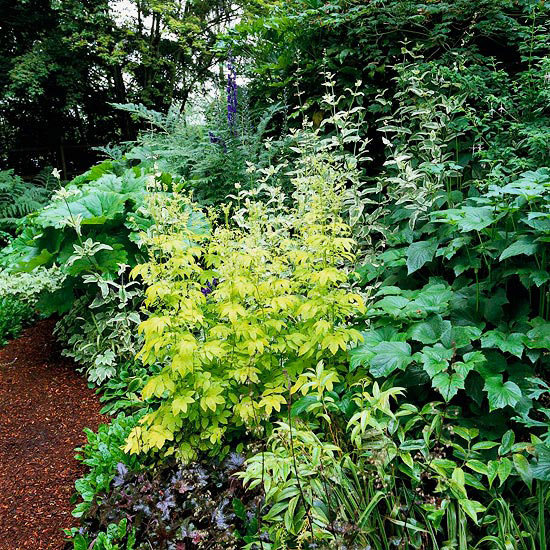
Play up Texture
Make a bold, dramatic statement in your shade garden without flowers by combining plants with different foliage textures and colors. Here, golden meadow rue creates a stunning contrast to anemone, purple-leaf coralbells, and big-leaf umbrella plant.
-
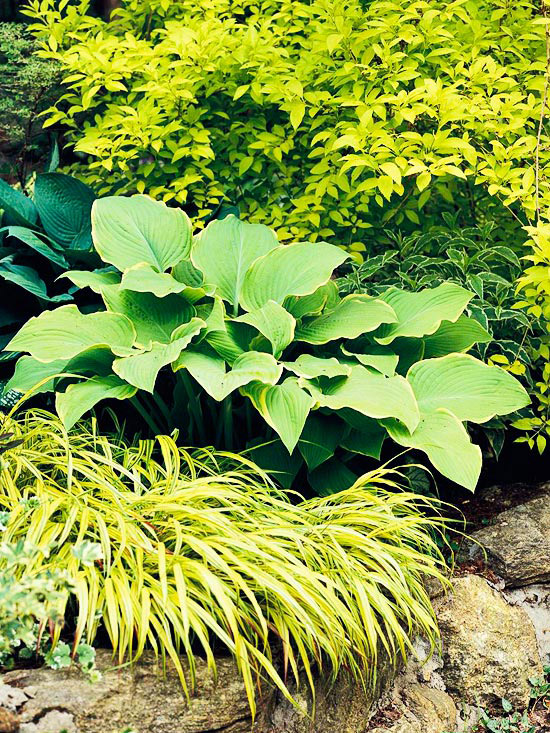
Plant Bright Colors
Shades of yellow and gold shine in the shade — so take advantage of them to illuminate dim spots. Here, golden Japanese forestgrass creates a perfect complement to a hosta and gold-leaf ‘Chardonnay Pearls’ deutzia.
- Learn more about Japanese forestgrass.
- Learn more about hostas.
- Learn more about deutzia.
-
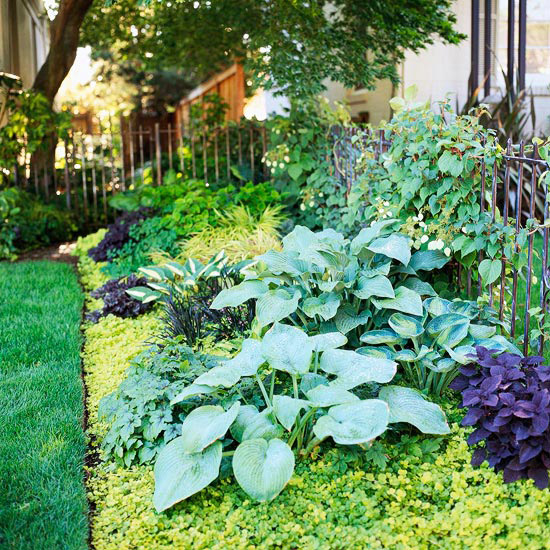
Utilize Groundcovers
Take advantage of low-growing groundcovers that crowd out weeds to make your shade garden easier to maintain. As an added bonus, many varieties provide an attractive carpet of color (such as this golden creeping Jenny, which practically glows underneath a planting of blue hostas, purple coleus, and black mondo grass).
- Discover some of the best groundcovers.
-
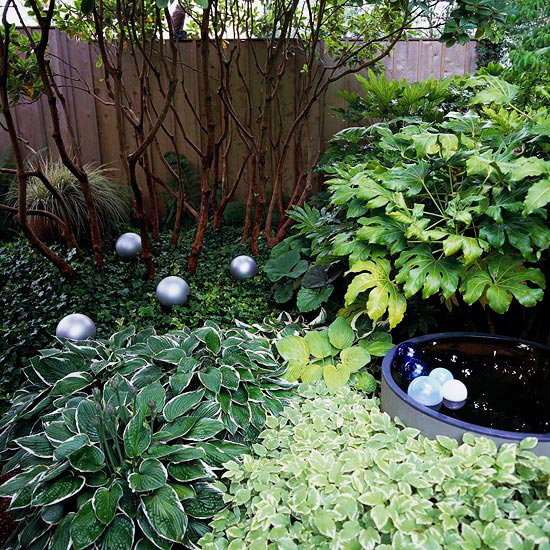
Incorporate Art
Mix in fun, quirky objects to lend personality to your garden. A collection of silver spheres creates a focal point and adds light and charm to this garden. The colorful spheres floating in the water garden provide even more interest.
-
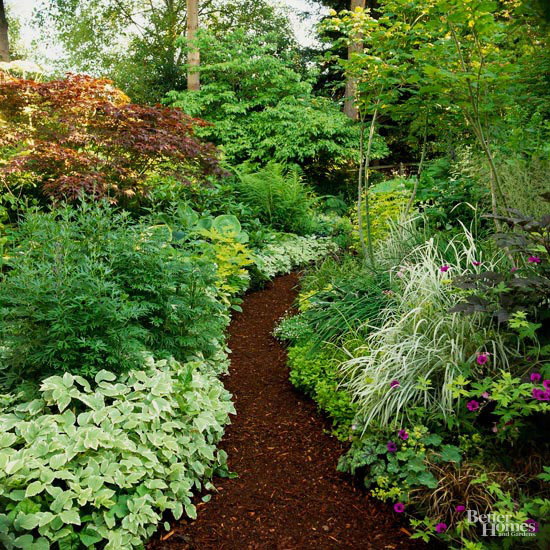
Pick Interesting Materials
Look past the plants and consider making hardscape elements the focal point of your shade garden. For example, a path mulched with dark wood chips becomes a stunning focal point when surrounded by white-variegated bishop’s weed, ornamental grasses, or golden groundcovers.
-
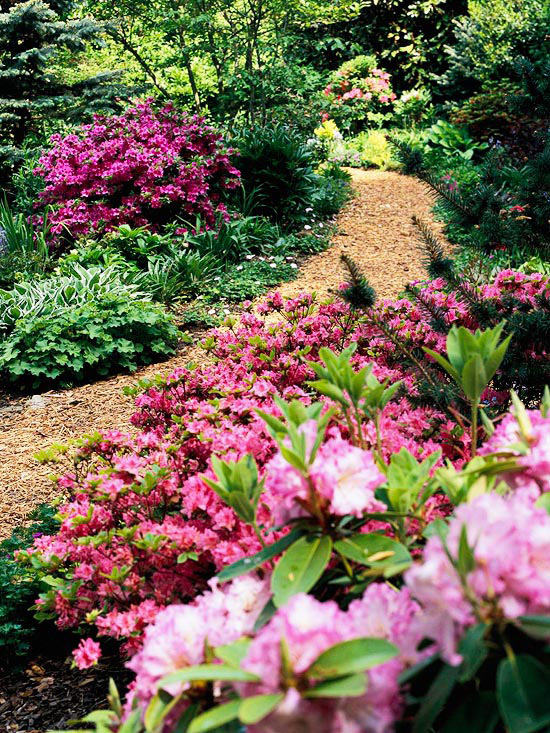
Use Flowering Shrubs
We typically think of perennials such as hostas for shade gardens — but don’t forget about the wide selection of flowering shrubs to pack your shady spots with color, texture, and height. Here, a variety of azaleas and rhododendrons provide a big spring punch, and their evergreen foliage keeps the garden looking good in winter.
- Discover more shade-loving shrubs in Plant Encyclopedia.
-
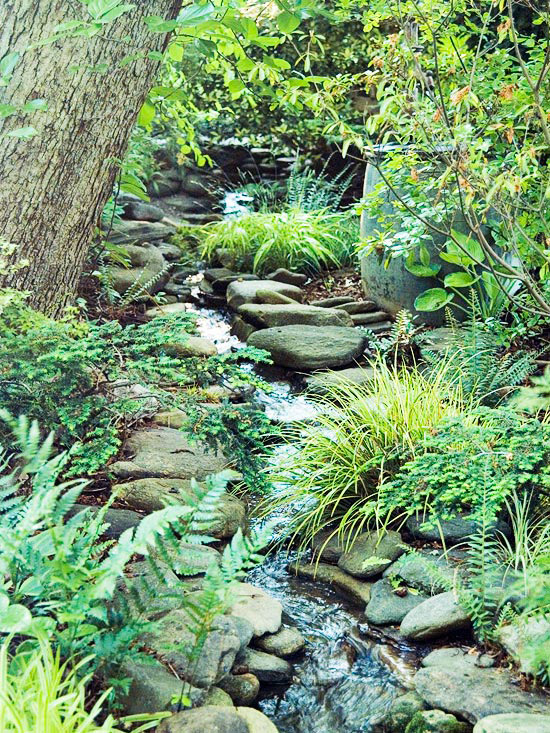
Add a Water Feature
Install a stream or other water feature to give your garden extra sensory appeal with the sound of trickling water. A simple fountain and recirculating pump are all it takes to make garden magic.
-
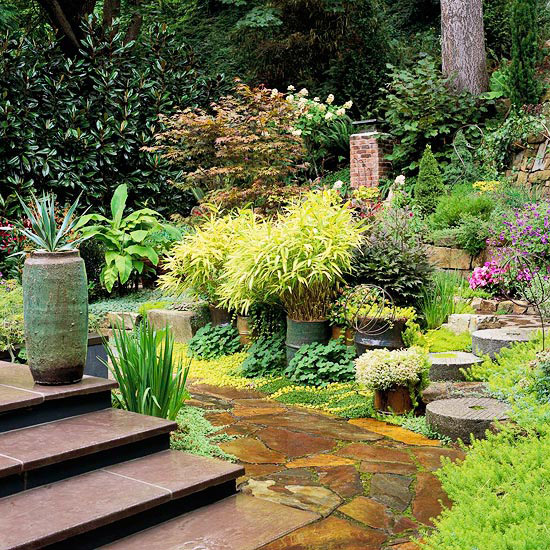
Employ Architectural Elements
Look for fun, unique objects to fill your garden with interest. This garden features a series of round millstones, old barrels as containers, and a variety of paving materials. They offer a fun, whimsical feel and are a great accent to a wide variety of plants.
-
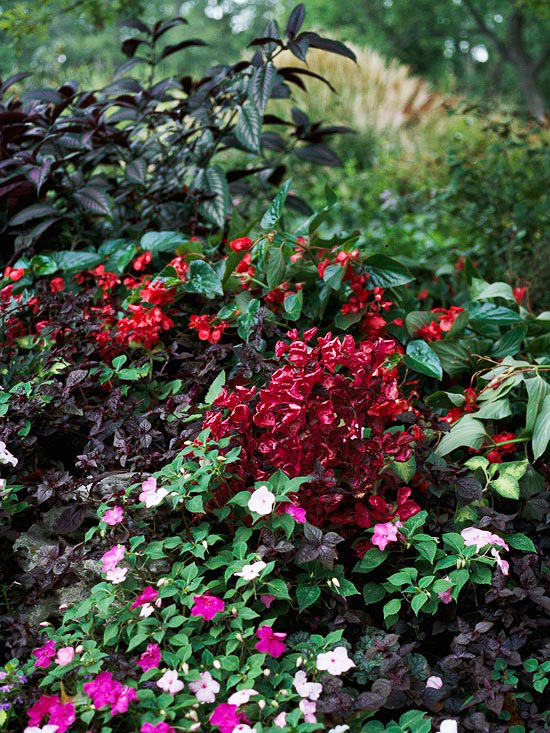
Grow Annuals
Select annuals to create color in shady spots. Annuals are a perfect addition for shade gardens because they bloom all summer long. Top varieties include impatiens, balsam, torenia, browallia, coleus, and iresine.
-
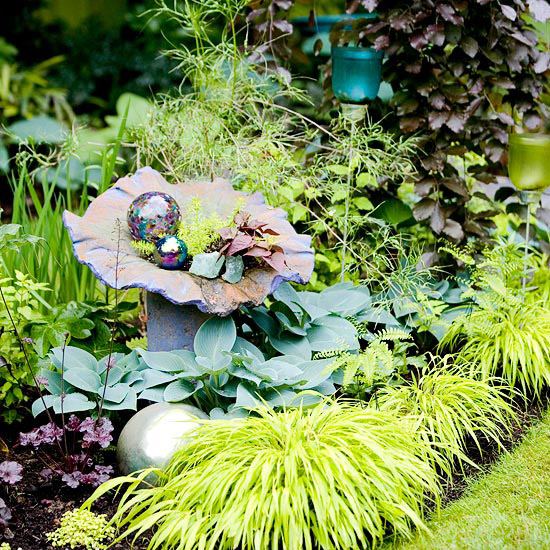
Use Fun Edging
Edge your beds and borders with an interesting material. Here, Japanese forestgrass gives the border a stunning color and texture. Look for fun architectural elements, as well, such as terra-cotta pots, old boots, or other objects that reflect your personality.
-
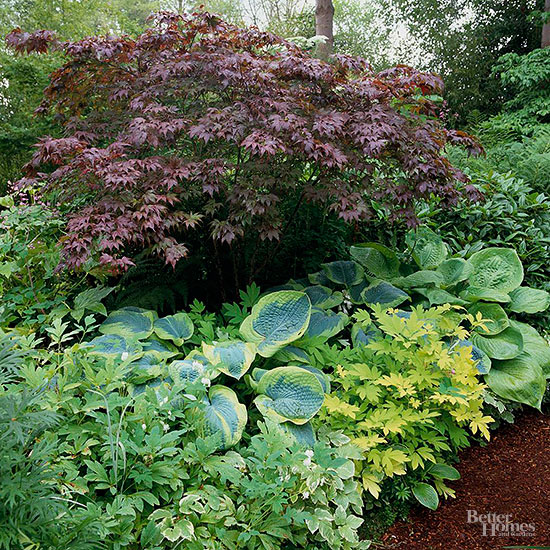
Create Interesting Vignettes
Sprinkle your shade garden with a few stunning plant combinations to act as focal points. Here, a Japanese maple is a perfect companion for a couple of types of hosta and ‘Gold Heart’ bleeding heart.
Test Garden Tip: Hostas usually have a coarse texture, so you can’t go wrong by mixing them with fine-textured plants.
-
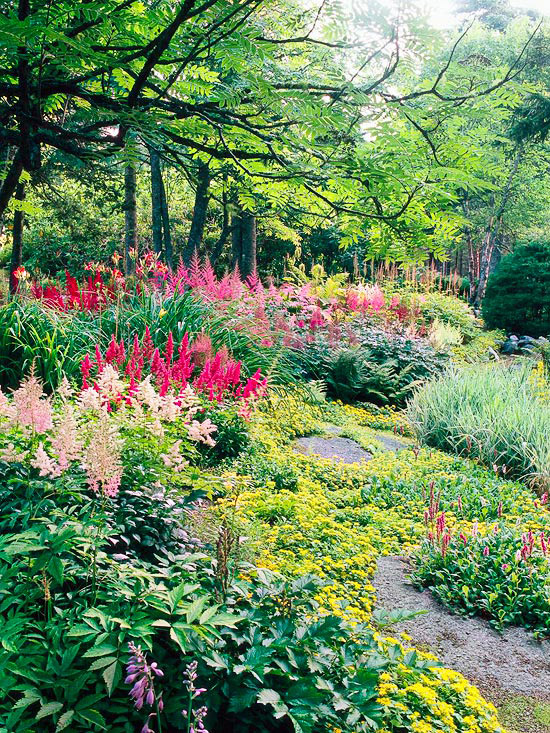
Plant en Masse
Just about every type of plant looks better in large groupings than it does planted individually. Here, drifts of astilbe seem to tower out of a groundcover of golden sedum.
Test Garden Tip: Planting en masse doesn’t necessarily mean growing only a single variety. Here, several selections of astilbe combine for even more interest.
-
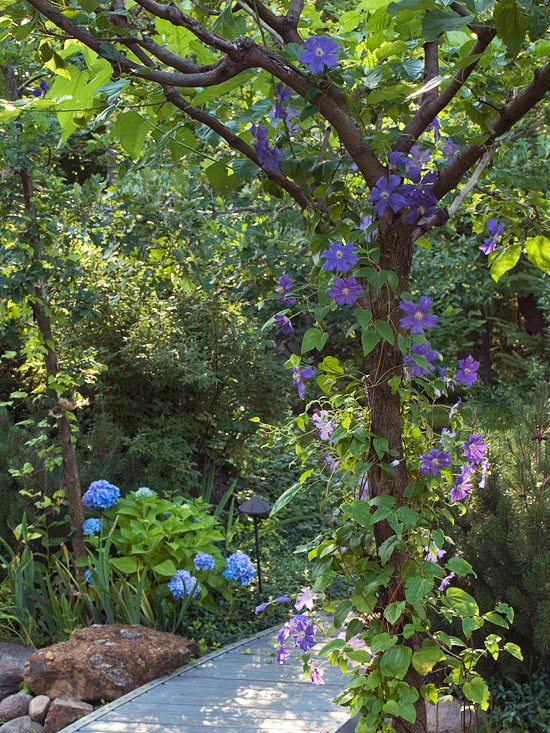
Get More in Less Space
Grow vines to add an extra layer of color to your shade garden. Smaller vines, such as clematis, are often happy to scramble up the trunk of small- to medium-sized trees. Bigger vines are ideal for covering a wall or creating a privacy screen.
Test Garden Tip: Three of the best vines for shady spots are Dutchman’s pipe, climbing hydrangea, and Virginia creeper.
- Learn more about Dutchman’s pipe.
- Learn more about climbing hydrangea.
- Learn more about Virginia creeper.
-
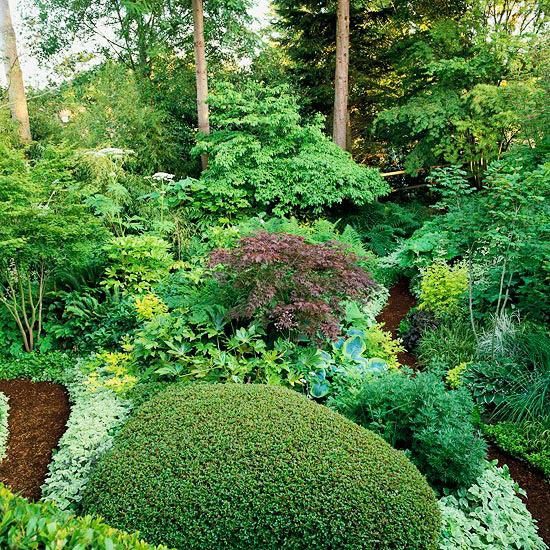
Pay Attention to Shapes
Go beyond color and texture to make your garden a showpiece. Use plant shapes to draw the eye. For example a straight-edge border of variegated bishop’s weed creates a line that contrasts a tightly clipped boxwood and loose mounds of Japanese maple, hosta, and other perennials.
-
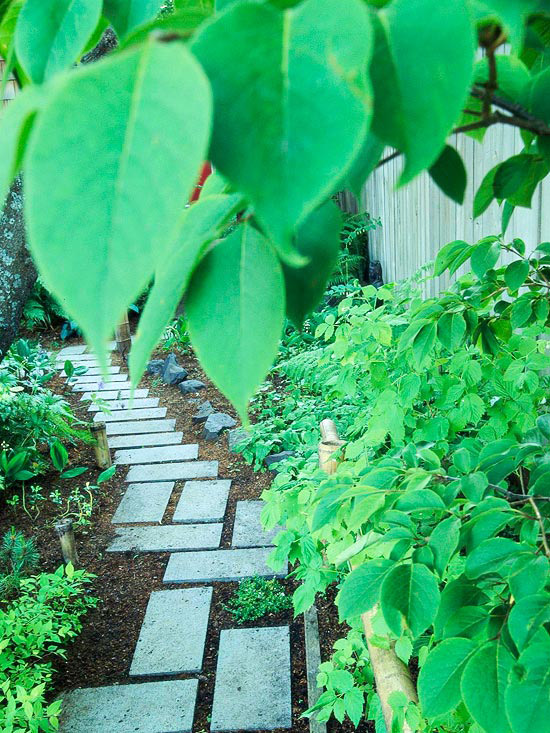
More on Shapes
Utilize other landscape features to give your yard fun shapes. Here, rectangular pavers set in a geometric pattern contrast fringetree’s oval leaves.
Test Garden Tip: Go a step beyond this in your yard by mixing materials for a path. For example, replace a few of the pavers and use bricks, wood rounds, or other objects as stepping-stones.
- Get more garden path ideas here.
-
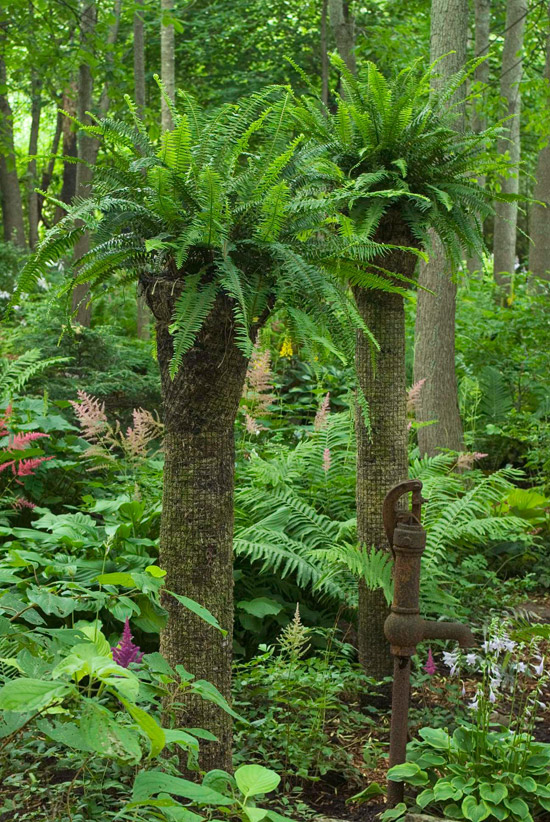
Add Height
Create layers to keep your garden interesting. Many shade gardens feature relatively low perennials, such as hosta, bleeding heart, and astilbe, underneath a canopy of tall trees. Bridge the gap by using tall planters or architectural features such as pillars, or grow shade-tolerant trees and shrubs to provide your garden with a variety of heights.
-
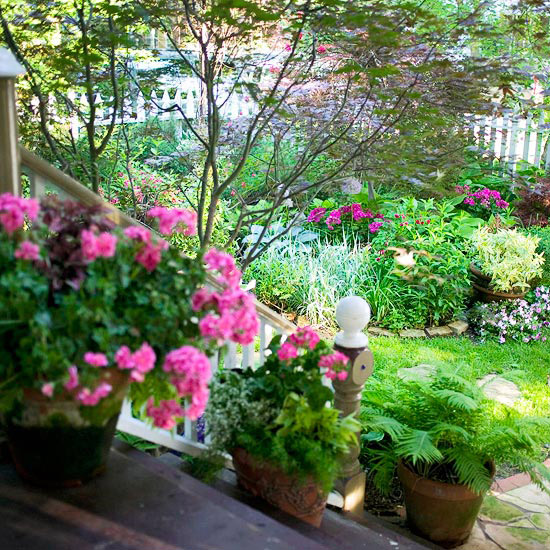
Select a Color Theme
Maximize the power of color in your shade garden by choosing only one or two hues. This garden, for example, relies on tones of pink and burgundy from hydrangea and impatiens and Japanese maple foliage. With the wide range of shade plants available, you can create a theme in almost any color.
- Find shade plants of any color for your garden.
-

SOURCE:http://www.bhg.com/gardening/landscaping-projects/solving-shade/shade-garden-design-ideas/